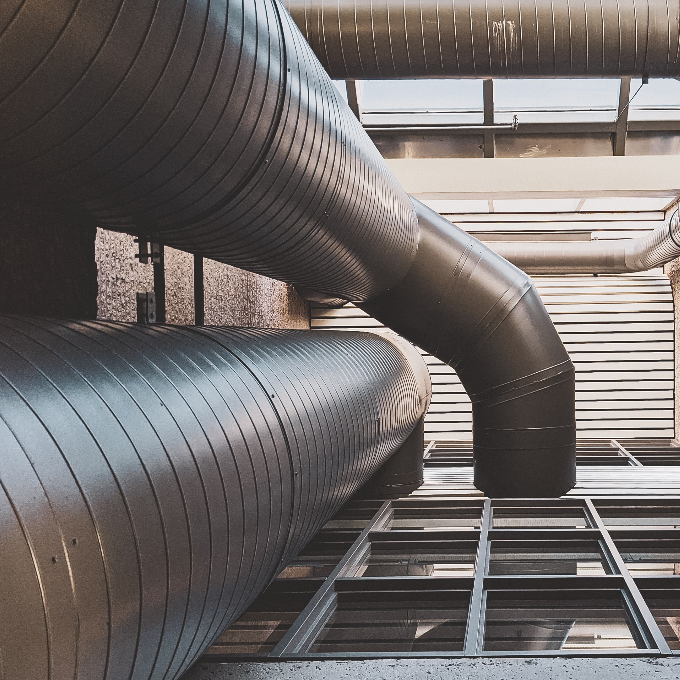

News

16th May 2023
Evaporative cooling: what you need to know
Temperature can be a huge influence on productivity levels in your business. Thanks to technology and modern cooling systems, we are now able to remain comfortable on some of the hottest days of the year. The flip side of this though is that high-tech appliances typically come at a pretty steep price. There are however other cost-effective methods for cooling your premises.
Today, we will take a closer look at one such method – evaporative cooling.

What is evaporative cooling and how does it work?
Evaporative cooling is a simple, safe and low-cost solution to cool and ventilate large spaces through a natural water evaporation process. External air is pulled through the wet cooling pads of the unit using an integrated fan, this is then blown into a building, delivering cool, fresh air into an indoor space.
This direct technique has a range of benefits for your commercial business. Some of the key advantages include:

A solid return on investment
Air conditioning has traditionally been the go-to solution for cooling offices and smaller spaces, however, evaporative cooling has proven to be a more effective alternative for your business if you need to cool a larger commercial or industrial space.
The system itself can typically have a capital cost of up to 50% less than traditional refrigerant-based cooling systems due to its simple design. And the savings don’t stop there – evaporative cooling also has significantly lower operational costs and lower maintenance costs than a typical refrigerant-based air conditioning system.
Evaporative cooling can provide a solid return on investment. Naturally, there is an initial upfront spend, however, this will ultimately be negated due to the savings it will bring to your energy bills and maintenance costs, thereby making it a worthwhile investment for your business.

Reduced energy consumption
Investment in an evaporative cooling system will provide your business with a highly sustainable and energy-efficient cooling solution. This cost-effective solution consumes less than 10% of the electricity of an equivalent refrigeration-based cooling system, meaning you can cool an area the size of a tennis court using half the energy of a domestic kettle. As energy consumption falls, so will your electricity bill!
Reducing your overheads is incredibly important as energy prices continue to rise, which can have a big impact on your overall profit margins. This is an economically viable solution, perfect for factories, warehouses and other businesses looking to improve their sustainability credentials.

Improved air quality
As well as being a cost-effective cooling method, evaporative cooling comes with the added benefit of being a fresh air ventilation system.
Traditional air conditioning works by capturing the hot air in the room and cooling it using a refrigerant. While this is an effective cooling solution, it can build up odours and pollutants in the air.
Unlike air conditioning, there is no recycled air with a commercial evaporative cooling system. Usually working in partnership with an extract fan, it will constantly provide 100% fresh air, whilst regulating and controlling humidity levels. This creates a healthy and comfortable environment for employees and visitors.
If you are considering cooling your surroundings at a reduced cost, get in touch.
Our team is always happy to help with any queries you might have on heating and cooling services.

12th November 2024
What does boiler maintenance involve
A commercial boiler provides the primary source of heating and hot water for any business property. Despite
Read More »
25th July 2024
The cost of renewable energy: Where to invest for the best payback
Renewable energy has emerged as a powerhouse in recent years for businesses and investors. From solar to
Read More »
9th July 2024
Legionella prevention: How to ensure the safety of your HVAC system
A commercial building owner in charge of HVAC systems should be aware of Legionella bacteria pneumophila, a
Read More »